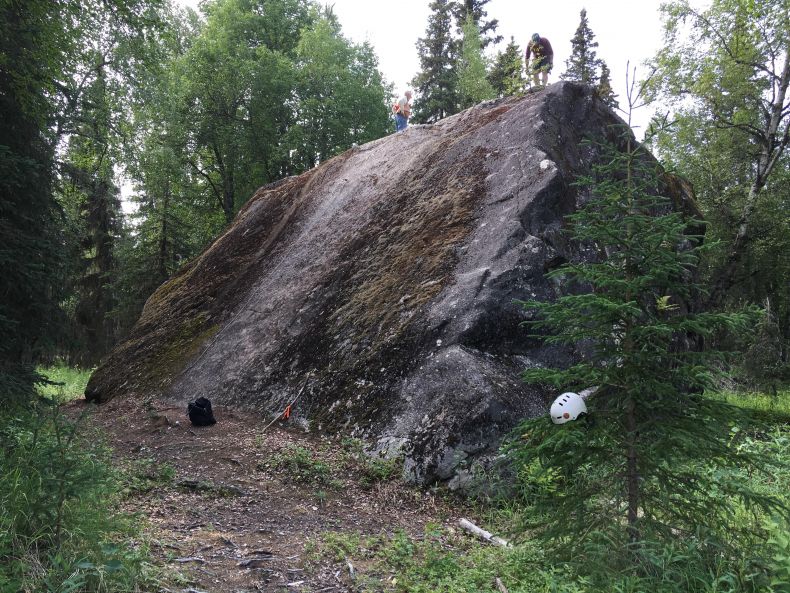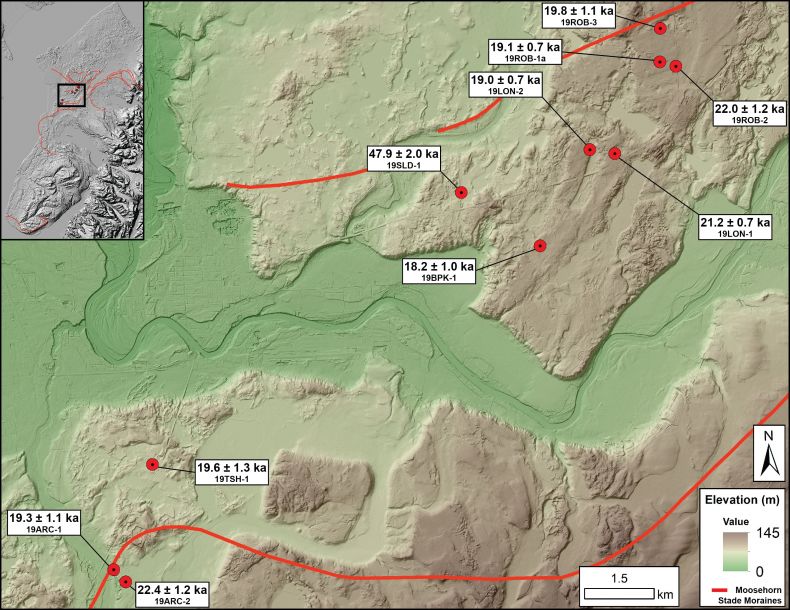The author(s) will give a talk
The culmination of the last glaciation in the Kenai Peninsula, Alaska based on 10Be ages from Alaska’s biggest moraine boulders
1 University at Buffalo, Buffalo, NY 14260
2 University at Buffalo, Buffalo, NY 14260
3 University at Buffalo, Buffalo, NY 14260
4 Reger's Geologic Consulting, Soldotna, AK 99669
During the last glaciation of Alaska, referred to as the Naptowne Glaciation, large lobes of ice flowed from the Alaska Range, Talkeetna Mountains and Chugach Mountains coalescing in the lowlands of Cook Inlet where they deposited large, complex landforms. The locally-termed Moosehorn Stade (LGM equivalent) was the earliest and most extensive glacier advance onto the Kenai Peninsula during the Naptowne Glaciation. A prominent terminal moraine trending NE-SW across a section of the northern Kenai Peninsula was deposited at the culmination of the Moosehorn Stade. Giant granitic moraine boulders, thought to be sourced in the western Talkeetna Mountains over 250 km away, are present in the moraine belt. These massive boulders provide an opportunity to use 10Be exposure dating to constrain the timing of terminal moraine emplacement and the culmination of the Moosehorn Stade on the Kenai Peninsula.
We present 10 new 10Be ages from large boulders ranging in height from 2 – 20 m deposited within the mapped limit of the Moosehorn Stade terminal moraine (Fig. 1). Ages range from 22.4 ± 1.2 to 18.2 ± 1.0 ka, excluding one outlier at 47.9 ± 2.0 ka that we suspect was significantly influenced by cosmogenic isotope inheritance or was recycled from a previous glaciation. The average of 9 boulder ages is 20.1 ± 1.4 ka. Radiocarbon ages (n = 3) from barnacle plates deposited in glaciomarine sediments within the limits of the Moosehorn Stade moraine range from 18.6 – 19.5 cal ka BP (2 sigma, DR=0).
These ages support a growing chronologic and stratigraphic framework of glacier advances in Alaska. The culmination of the Moosehorn Stade on the Kenai Peninsula at 20.1 ± 1.4 ka occurred in-step with a majority of alpine glacier histories elsewhere in mainland Alaska (not in SE Alaska). We hypothesize that a relatively early culmination of glaciers across Alaska during Marine Isotope Stage 2 may have been initiated by steadily rising Boreal summer insolation. Further age constraints on post-LGM deposits on the Kenai Peninsula may also elucidate the role of rising eustatic sea level, which barnacle plates deposited in Moosehorn Stade drift suggest may have played a role in modulating deglaciation.

Fig 1.
Large granitic boulder deposited within the terminal Moosehorn Stade moraine limit on the Kenai Peninsula

Fig 2.
Hillshade map of the area around Soldotna, AK from lidar elevation data made available by the USGS. Each boulder is plotted on the map with its calculated sample 10Be age and analytical uncertainty. Red lines are mapped limits of Moosehorn Stade moraines (same for inset). Inset is of the entire Kenai Peninsula.